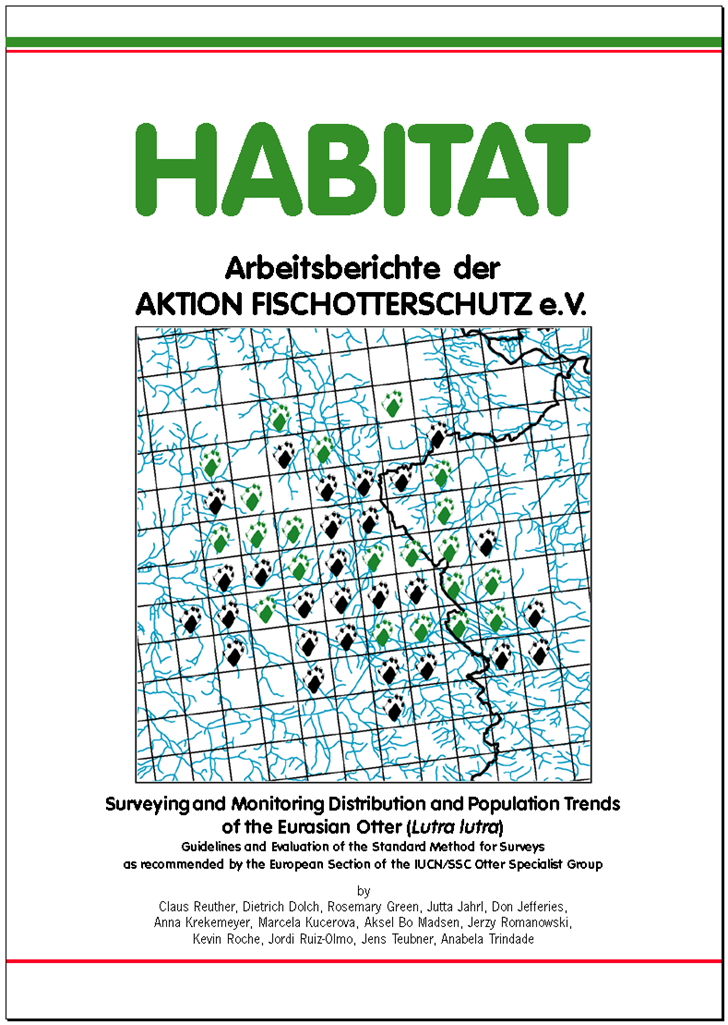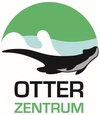The European Standard Method
In 1977 English experts developed a so-called sampling method that was recommended by the IUCN/SSC Otter Specialist Group in 1984 and published as the European Standard in 2000. The monitoring grid UTM (Universales Transversales Mercator System) is used as the map-base for distribution surveys, because, unlike the German TK 25 grid (Topographische Karte 1:25.000), it can be used for the whole of Europe (and the rest of the world). The monitoring grid UTM (Universales Transversales Mercator System) cross-border covers all of Europe. The monitoring grid UTM (Universales Transversales Mercator System) does not superpose with the German TK 25 grid (Topographische Karte 1:25.000).
A comprehensive monitoring of all waterbodies is unrealizable in practice. Therefore random samples are surveyed. There are 4 random samples in a 10 x 10 km square (1 sample/5x5 km2). The selection of random samples does not occur on-site, but by using maps. For some counties, all random samples have been selected. To be able to process the data digitally in a Geographic Information System, all random samples have to be defined by coordinates. This can be done either by reading maps or by using GPS (Global Positioning System).
As fewer records are found during summer, and floods often derail surveys during spring, surveys are mostly carried out from October to December. The sample locations are investigated over 600 m for otter signs. Research showed that usually more than 50% of all records are found at the starting point. On principle, always only one riverbank side is investigated. Below bridges with wide, sandy banks, the chance to find otter footprints is much higher than in grassy pipe culverts.
If an otter sign is found at a sample site, the search is stopped and the random sample is recorded as “positive”. If there are no signs along the 600 m stretch along the bank, the random sample is recorded as “negative”. The only otter signs that count as prove are faeces and otter footprints, because there can be no doubt about the presence of an otter. The admission of an otter sighting requires either a picture for confirmation or someone declared to recognize otters without fault. The percentage of “positive” samples in an area shows the distribution of otters and allows for comparison between regions. The Standard Method enables the compilation of digital distribution maps on an international scale. Furthermore, areas where the described method was used but no signs of otters have been found can be illustrated.
Systematic surveys present a reliable method to evaluate the distribution of Eurasian otters.
Methode dar, die Verbreitung von Fischottern zu beurteilen.







